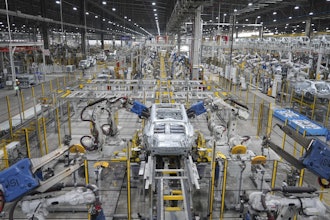
With the ever-increasing stress on the global food system, the world is in desperate need of a more sustainable agri-food supply chain. While emerging technologies have generally improved social and economic conditions, there is still more that can be done to address concerns about the agri-food supply chain.
Innovations that address these concerns must not only consider the way food is produced but should also cover the entire supply chain, from food processing to consumption.This article will discuss how innovative technologies allow all members of the supply chain to cooperate to bring about a high level of supply chain visibility.
Why Increase Agri-Food Supply Chain Visibility?
Visibility in any supply chain ensures that key information is readily available to those who need it, whether they are inside or outside the organization. Visibility not only deals with the availability of information but also with the accuracy and usefulness of the information. Even without physical access to the products, members in the supply chain should be able to access the relevant data.
Now more than ever, consumers have taken an interest in sustainable products. A recent study showed that, compared with 2019, 23% more consumers are prioritizing sustainable food products. They want to know the true source of their food and the steps it took to make it to their local grocer. Terms like “farm to table,” “organic,” and “grass-fed” are used on hundreds of food items, and consumers often wish to ensure the validity of these statements. They want to know if these product claims can be supported and if they are receiving the high-quality goods they believe they are paying for.
Increased supply chain visibility can also result in better tracking and traceability of products, as well as more accurate forecasting of available goods and supply. Tracking various animals and crops as they move through the agri-food supply chain can help to allay consumer concerns about safety and hygiene. When dealing with the production of goods from biological systems, it’s often hard to determine when goods will become available. Crop yield amounts vary from year to year, and animals may not be ready at the necessary time for processing. In forecasting availability, readily available on-farm data could assist retailers in predicting the quality and timing of supply.
Innovations that Support & Improve Sustainability and Visibility
Visibility is key to sustainability, as it makes it possible for companies to identify areas where sustainable practices can be implemented or improved. The following innovations have been proven to improve sustainability and visibility throughout the agri-food supply chain.
Blockchain
Blockchain technology has been utilized to track anything from ice cream to canned tomatoes and tuna. Acting as a digital ledger, Blockchain creates an unfalsifiable audit trail to trace products through the supply chain. In the agri-food supply chain, the implementation of blockchain technology has improved social and environmental practices worldwide. End to end traceability using blockchain technology has increased visibility through the supply chain, clearly exposing unsustainable practices.
Internet of Things (IoT) Applications
The Internet of Things (IoT) supports the traceability of food products, increasing transparency and authenticity throughout the agri-food supply chain. Integrated cloud platforms track and optimize movement in the supply chain, collecting and sharing this information in real-time, further increasing visibility.
IoT and sensors have succeeded in reducing the demand-supply gap and have reinforced communication between partners in a supply chain. IoT is also capable of helping to visualize and correct weaknesses in the chain when collected data is analyzed via big data analytics.
Data analysis helps companies uncover patterns and make better decisions in pricing and in determining inventory size. These decisions help optimize inventory, thereby lowering operational costs, and help maximize profits.
Big Data Analytics
Data collected by IoT cloud-based systems can be analyzed and used to respond to needs in the agri-food supply chain. The data that comes from sensors, satellites, or climate data can be directly delivered to members of the supply chain. For example, farmers can use big data analytics (BDA) to help adopt smart farming, which ultimately results in higher visibility throughout the chain.
Notably, the technologies involved in the agri-food chain must be geared towards ease of use for all members of the supply chain. The data analyzed through BDA can assist in tweaking issues in software. If design issues are revealed in the software, these should be evaluated and improved to maintain consistent transparency. This decreases the likelihood of missing or inaccurate data.
What A Sustainable Agri-Food Supply Chain Accomplishes
To achieve a sustainable agri-food supply chain, there must be a balanced approach to ecological, social, and economic sustainability. Increasing sustainability in these areas should increase productivity and visibility, reduce operating costs, and result in long-term profitability.
The use of IoT, blockchain technology and big data analytics allows members of the supply chain to have real-time access to data. This increases visibility and enables members in the chain to adjust output and consistently match the market demand.
A sustainable agri-food supply chain promotes responsible consumption and production in the chain. Company collaboration will result in the implementation of sustainable solutions to reduce its environmental footprint. An example of this would be to increase the use of renewable energy in food production systems when possible. Economic sustainability will ensure that every member of the chain is paid a liveable wage and will guarantee that they receive fair returns under positive labor conditions.
 Browning
Browning
Daniel Browning is the Business Development Coordinator at Do Supply Inc., a global supplier of automation products. He enjoys writing about automation, AI, and new technology.























